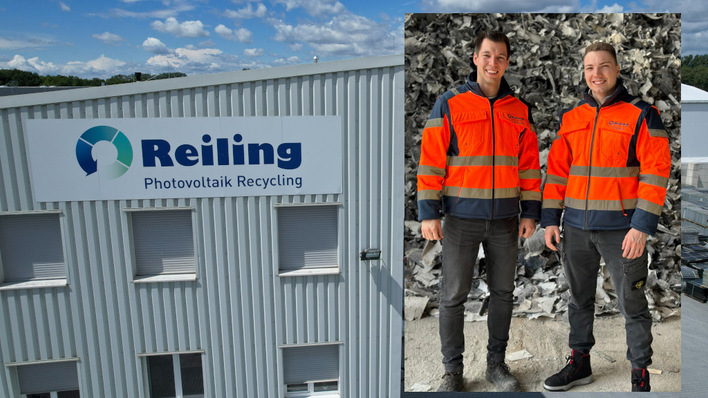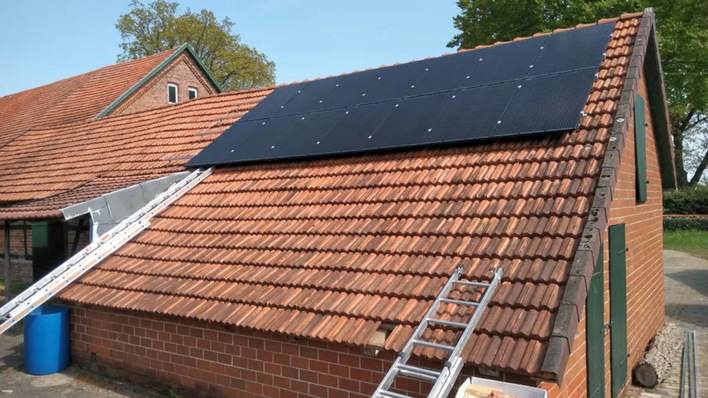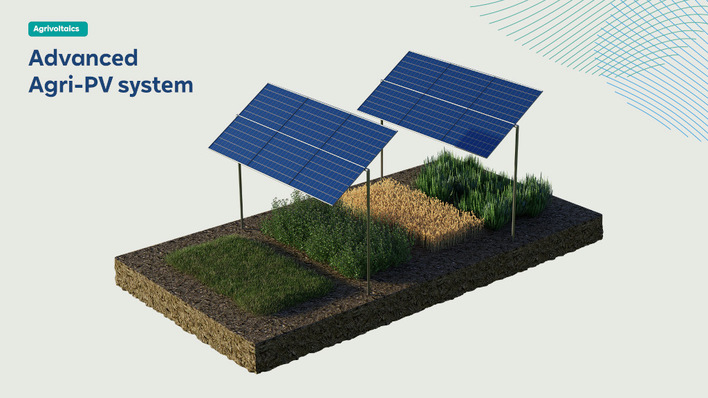For the Intersolar, PMT brings an advanced version of the successful flat roof system Evolution. Where could you improve the system?
With the new Evo 2.0, we cover all of the requirements that the successful Evolution mounting system has taught us while it has been on the market. The further developed variant will initially be limited to an inclination of ten degrees for both the south-facing and east-west systems. A version for 15 degrees is being intensively tested and will be brought out at a later date. All in all, Evo 2.0 is more stable, aerodynamic and cost-effective, and it is even easier to assemble than its predecessor.
Which market requirements do you mean exactly?
First, we looked at which project panels are currently being ordered and installed again and again in the market. These are up to 1,046 millimetres wide. Evo 2.0 has been optimised to fit these. In our older east-west system, the panels at the ridge were very narrow. With the Evo 2.0, we permit widths from 960 to 1,050 millimetres. This makes the gap slightly wider, which improves rear ventilation. This also simplifies installation. And above all, the wider ridge gap improves aerodynamics, which reduces the effort required for ballasting.
What panel lengths have you specified for Evo 2.0?
Between 1,570 and 2,050 millimetres and for special projects also more or less than that. This also allows us to mount 72-cell project panels horizontally. And we get by with the same clamp for all frames. It is universally used for frame heights of 30 to 50 millimetres.
What other improvements have you implemented?
The ground clearance between the roof foil and the lower edge of the panel has been increased from 57 to 65 millimetres. To further improve the aerodynamics, it is now possible to install additional side covers. The advantages of the screwless click connector, the wide and continuous floor rails, the interchangeable installation, the integrated cable duct and so on have of course been retained and further optimised. All in all, three important points have been improved: less material usage with increased stability, less ballast due to improved aerodynamics and even more comfortable installation.
Can you specify by what percentage the ballasting requirement is decreasing?
Basically, ballasting depends on many factors. In the Evo 2.0 system, we not only succeeded in further improving the aerodynamics in the system. The system stiffness at the critical points has also been increased. This results in larger load influencing surfaces. Which has at least as much impact as the aerodynamics themselves. All in all, however, this depends heavily on the individual roof. But it is estimated that ballast reduction is between 10 and 20 percent to the Evolution system. We always calculate very conservatively to be on the safe side. Safety always comes before optimisation!
Does the ballasting happen in the same way as with the previous system?
With Evo 2.0, we have laser-cut special openings into the profiles of the bottom rails, through which the ballast blocks can be fixed very easily and quickly with middle or end clamps. In any case, we can add a lot of ballast to the system without the technicians needing accessories. This saves time and, above all, money.
Will Evo 2.0 also be certified by the German building authorities, as was the case with Evolution?
Of course, that is what we are striving for: The relevant extension application has already been submitted, but the process at the German Institute for Structural Engineering will take some time. On top of that, we are also seeking to be certified in accordance with UL 2703 is and, like the previous system, it has a lightning current carrying capacity certificate in accordance with DIN EN 62561-1. By the time of the Intersolar, we want to have delivered the Evo 2.0 to some pilot projects at least.
Long profiles are often a problem with large roof installations. High temperatures make them expand and the panel fields move. How do you deal with this?
We know from practical experience that such systems migrate due to the effect of temperature. The stiffer and longer the rails and their connections, the greater the thermal expansion effects can be. Our click system as a connecting element between the maximum two-metre long floor rails allows for the compensation of such effects. The click connection acts like a spring bearing: The system itself does not move.
Have you put this to the test?
We have made very elaborate attempts to do this. Among other things, it emerged that, in addition to the system itself, the type of structural protection mats under the floor profiles also played an important role. If they are selected accordingly, the mats can also contribute to reducing the so-called caterpillar effect. In collaboration with an expert in roof waterproofing, we have also developed an applied solution to anchor the panel fields to the roof in selected places. This fastening solution used by us is also certified by the building authorities. It makes it possible to work without the hassle of having to open the roof.
Flat roofs are usually only very slightly inclined, if at all. How do you ensure the drainage of water?
Our building protection mats, which are already integrated into the system, allow water run-off, regardless of the direction in which the system is installed. They are only partially fastened and sufficiently high. In addition, we have specifically added openings to the undersides of the floor profiles, so that no standing water can accumulate in the system which would lead to damage as a result of moisture or frost. We comply with the roof drainage standard in DIN 1986-100 and the applicable flat roof guidelines.
Is standing water not also an issue for panels? As in: drainage holes?
Yes, the assembly guidelines of many panel manufacturers stipulate that these drainage holes on the panels must be kept clear to prevent damage from frost and ice. This is an important issue when it comes to warranties. We take this into account with as free a support as possible in the corner area of the panels and with additional drainage channels in the support surfaces. Compliance with the assembly guidelines applies not only to drainage, but also to the permitted clamping ranges or the low-resistance connection certificate.
Can you already tell us something about the price of the new system?
We expect that it will be about 15 percent cheaper than Evolution. In addition to the innovations mentioned above, Evo 2.0 will be particularly easy to maintain.
What do you mean by that?
We want to integrate the fall protection system into the assembly system as a continuous rope system which up to three technicians can hook into. This is a key demand from our partners. Otherwise, elaborate harness points or railings at the roof edge would have to be fitted. But that takes a lot of work, carries the risk of leaks or usually looks unpleasant as well as casting shade on to the panels close to the edge of the roof.
The markets are going through an upswing. Are you seeing that too?
Between 2016 and 2017, we doubled our sales. And the figures for this year indicate that we are going to achieve yet another two-fold increase. Together with our partners in many markets in Europe, Switzerland and overseas, we are experiencing sustainable growth. (HS)
Discover PMT's products on video: https://youtu.be/8rEJW0PdI4k
What was new at the Intersolar and the EES Europe 2018 in Munich? Watch our expert’s movie clips here:
http://www.pveurope.eu/Videos/pv-Guided-Tours-videos-2018
Stay informed, get our newsletter twice a week.
Register here: http://www.pveurope.eu/Newsletter
Read more about solar modules.
Read more about solar mounting systems.
Read more about solar energy storage.







